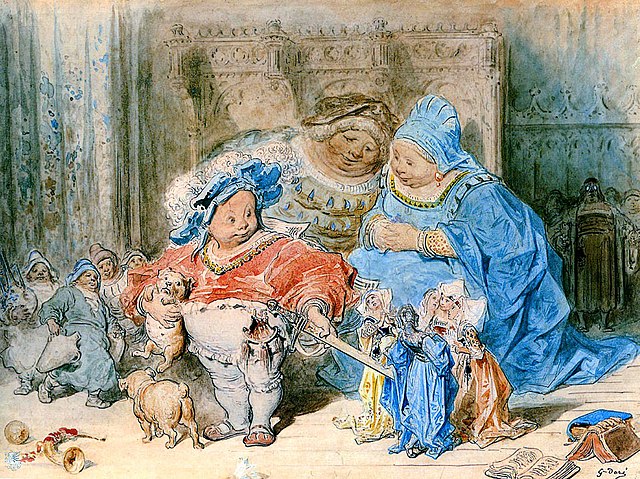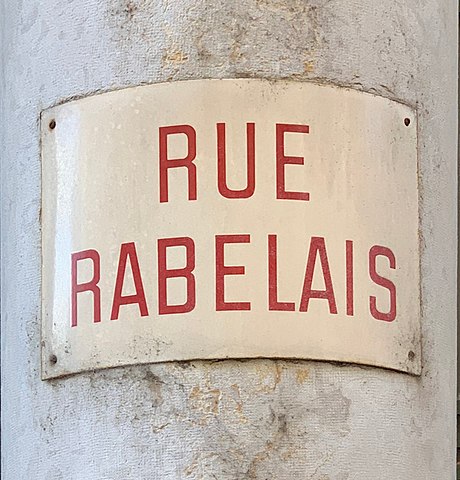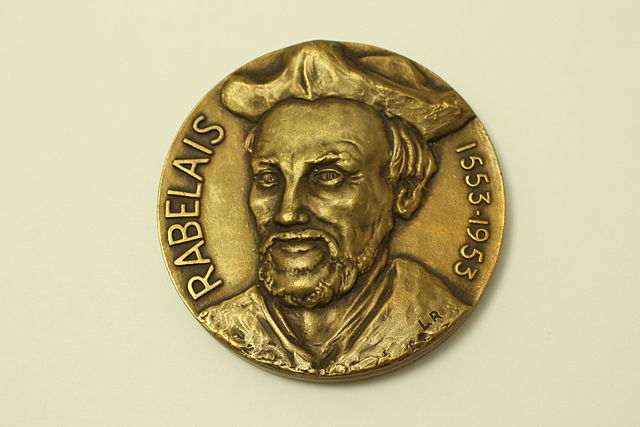
The Thammasat University Library has newly acquired an important book of interest for students of literature, history, comparative religion, social science, and related fields, through the generosity of the late Professor Benedict Anderson and Ajarn Charnvit Kasetsiri. It is part of a special bequest of over 2800 books from the personal scholarly library of Professor Benedict Anderson at Cornell University, in addition to books previously donated from the library of Professor Anderson at his home in Bangkok.
Rabelais and his World by Mikhail Bakhtin is shelved in the Charnvit Kasetsiri Room of the Pridi Banomyong Library, Tha Prachan campus. It joins other books by and about the French Renaissance writer François Rabelais in the TU Library collection. Mikhail Bakhtin was a Russian philosopher and literary critic. Rabelais and His World is considered to be a classic of Renaissance studies as well as literary studies, semiotics, and cultural interpretation. It focuses on Rabelais’s Gargantua and Pantagruel, seen as a reflection of the social system during the Renaissance. As Rabelais is noted for his wild and sometimes rude humor, Bakhtin examines his work as a variation on folk humor. In the introduction to Gargantua, Rabelais wrote:
I’d rather write about laughing than crying,
For laughter makes people human, and courageous.
BE HAPPY!
Laughter in the tradition of Rabelais, as Bakhtin observes, is linked to ancient rituals and spectacles. Detailed descriptions of food and body parts are also elements of Rabelais’ view of life as part of a cycle. As Bakhtin wrote:
The aim of the present introduction is to pose the problem presented by the culture of folk humor in the Middle Ages and the Renaissance and to offer a description of its original traits. Laughter and its forms represent… the least scrutinized sphere of the people’s creation…. The element of laughter was accorded to the least place of all in the vast literature devoted to myth, to folk lyrics, and to epics. Even more unfortunate was the fact that the peculiar nature of the people’s laughter was completely distorted; entirely alien notions and concepts of humor, formed within the framework of bourgeois modern culture and aesthetics, were applied to this interpretation. We may therefore say without exaggeration that the profound originality expressed by the culture of folk humor in the past has remained unexplored until now. And yet, the scope and the importance of this culture were immense in the Renaissance and the Middle Ages. A boundless world of humorous forms and manifestations opposed the official and serious tone of medieval ecclesiastical and feudal culture… Clowns and fools, which often figure in Rabelais’ novel, are characteristic of the medieval culture of humor. They were the constant, accredited representatives of the carnival spirit in everyday life out of carnival season… As such they represented a certain form of life, which was real and ideal at the same time. They stood on the borderline between life and art, in a peculiar midzone as it were, they were neither eccentrics nor dolts, neither were they comic actors.

Bakhtin also offered these thoughts on older traditions of amusement:
The Renaissance conception of laughter can be roughly described as follows: Laughter has a deep philosophical meaning, it is one of the essential forms of the truth concerning the world as a whole, concerning history and man; it is a peculiar point of view relative to the world; the world is seen anew, no less (and perhaps more) profoundly than when seen from the serious standpoint. Therefore, laughter is just as admissible in great literature, posing universal problems, as seriousness. Certain essential aspects of the world are accessible only to laughter…In the Middle Ages folk humor existed and developed outside the official sphere of high ideology and literature, but precisely because of its unofficial existence, it was marked by exceptional radicalism, freedom, and ruthlessness. Having on the one hand forbidden laughter in every official sphere of life and ideology, the Middle Ages on the other hand betwowed exceptional privileges of license and lawlessness outside these spheres: in the marketplace, on feast days, in festive recreational literature. And medieval laughter knew how to use these widely… However, medieval laughter is not a subjective, individual and biological consciousness of the uninterrupted flow of time. It is the social consciousness of all the people. Man experiences this flow of time in the festive marketplace, in the carnival crowd, as he comes into contact with other bodies of varying age and social caste. He is aware of being a member of a continually growing and renewed people. This is why festive folk laughter presents an element of victory not only over supernatural awe, over the sacred, over death; it also means the defeat of power, of earthly kings, of the earthly upper classes, of all that oppresses and restricts.
Rabelais has influenced people who have never read his books, as some words have entered many languages to refer to him. The adjective Rabelaisian is used to describe something marked by gross robust humor, extravagance of caricature, or bold naturalism.
The adjective gargantuan, drawn from the novel Gargantua by Rabelais about a giant who eats a lot, means something enormous, massive, or colossal.

Thailand and Rabelais
Writers in the Kingdom often use the adjective gargantuan in articles for such newspapers as The Nation. Here are a few usage examples:
- Thailand is aiming to have one of the world’s largest state administrative centres, almost as big as the gargantuan US Pentagon outside Washington.
- Caving expert Vernon Unsworth, who lives part of the year in Thailand, took part in the gargantuan 18-day effort to retrieve the 12 boys and their coach, a mission that ended on July 10 when the last five members were extracted. The boys are all in good health and expected to be released from the hospital Thursday.
- Veteran artist and social critic Paisal Theerapongvisanuporn returns to the scene after an absence of several years with the politically-charged photo exhibition “The Nightmare Remains” at the Kathmandu Photo Gallery. The show will display dozens of Paisal’s photographs, many of them from the late 1980s. There are conceptual photographs focusing on such symbols as the Thai flag, Victory Monument, bank notes, golf balls, the American flag, the Japanese flag and broken dolls that symbolise capitalism, political conflicts and social sickness. Known for his surrealistic paintings inspired by Salvador Dali, Paisal’s images have a surrealistic bent and are strongly critical of both Thai politics and social issues… The gargantuan problems of national and transnational corporate usurpation of natural resources, greed, corruption, exploitation and oppression reflected in Paisal’s photography almost 30 years ago, have not only remained, but flourished into the accepted norm.
As another example of the impact of Rabelais in the Kingdom, the SEAWEED project studying Soil erosion in agricultural watersheds: how can gullies be potential corridors of biodiversity? has been implemented last year and this year as part of a new cooperation between Naresuan University (NU) and François Rabelais University in Tours, France. The project is supported by the French Research Institute for Development, a science and technology establishment under the joint supervision of the French Ministries of Higher Education and Research and Foreign Affairs. Its main scientific goal is to assess the potential for natural vegetation recovery and biodiversity in agricultural land in tropical climates. Two Thai students at the master’s degree level and one at the PhD level are participating in the project, being trained in different methodologies. As part of the project, a large-scale rain simulation campaign took place in Nan province in January and February 2019.
(All images courtesy of Wikimedia Commons)

